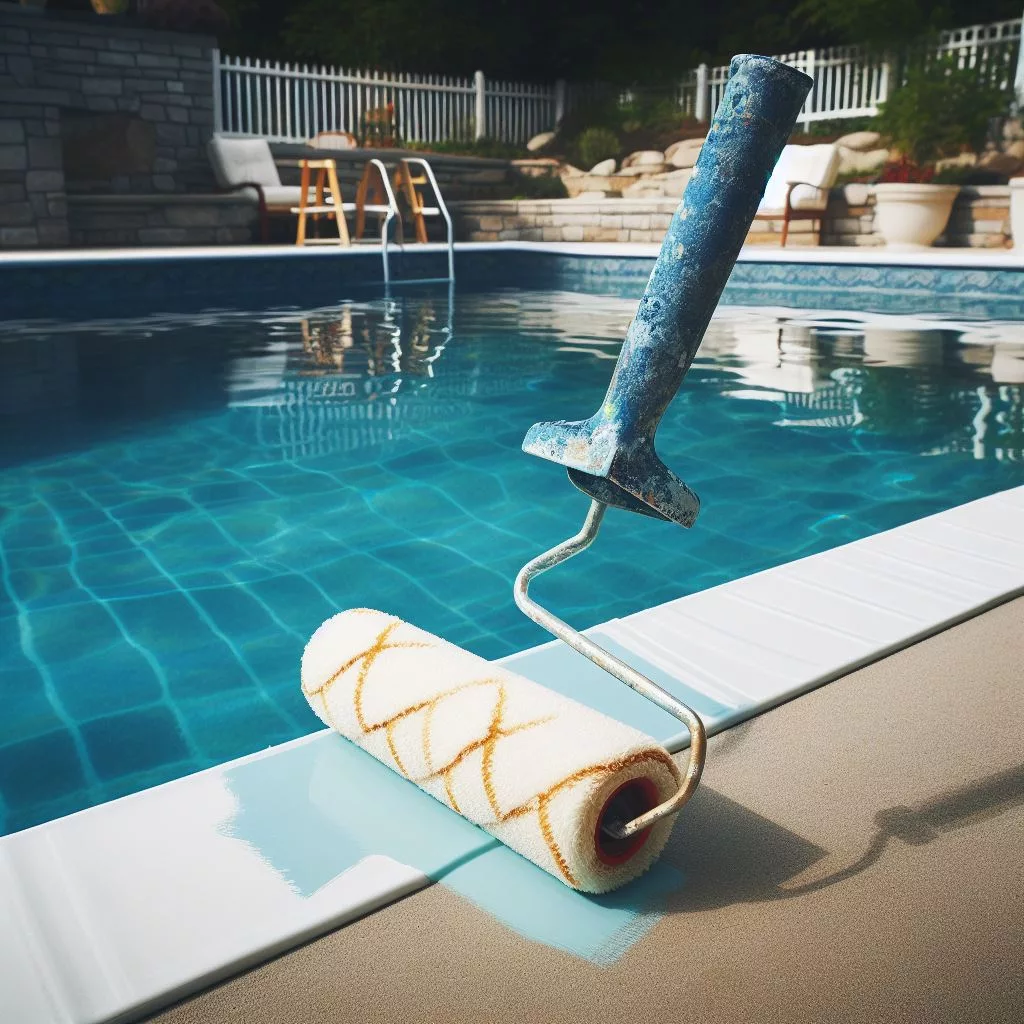
Are you a proud pool owner looking to give your swimming oasis a fresh, vibrant look? Or perhaps you’re considering painting your pool for the first time and want to ensure it’s done right. Look no further – this comprehensive guide will walk you through everything you need to know about choosing and applying swimming pool paint. Whether you’re in it for aesthetics or safety, we’ve got you covered.
Why Paint Your Pool?
Aesthetics
The most obvious reason to paint your pool is to enhance its aesthetics. A fresh coat of paint can completely transform the look of your pool, making it more appealing and inviting. You can choose from a variety of colors and finishes to match your style and create the atmosphere you desire in your outdoor space. Painting your pool isn’t easy, and it might take several tries to achieve your desired aesthetic, but when done correctly , it can create a solid result.
Pool Safety
Safety is another important consideration when it comes to pool painting. The right type of paint can make your pool’s surface less slippery, reducing the risk of accidents. Additionally, painting can help to seal and protect the pool’s surface, preventing issues such as cracks and leaks. Some paints are better than others when it comes to safety.

Types of Pool Paints
When it comes to pool paint, not all paints are created equal. There are several types to choose from, each with its unique characteristics and suitability for different pool surfaces. Here are the primary types of pool paint to consider:
Enamel Pool Paint
Enamel pool paint is an oil-based paint known for its durability and resistance to harsh pool chemicals. It’s suitable for both concrete and plaster pools and provides a smooth, glossy finish. Enamel paint is a popular choice for those seeking a long-lasting, attractive pool surface. It’s also the easiest to work with.
Epoxy Pool Paint
Epoxy pool paint is known for its exceptional adhesion and durability. It’s suitable for concrete, plaster, fiberglass, and previously painted surfaces. Epoxy paint provides a strong, protective barrier and is available in a variety of colors. It’s common in commercial and industrial applications due to its chemical nature.
Acrylic Pool Paint
Acrylic pool paint is a versatile option suitable for concrete, plaster, fiberglass, and previously painted pools. It’s the most popular type of swimming pool paint for a reason, offering good adhesion, UV resistance, and a wide range of color options. Acrylic paint is an excellent choice for those looking for an affordable option to customize their pool’s appearance.
Choosing the Right Pool Paint
Selecting the right pool paint is crucial for a successful pool painting project. Your choice should be based on the type of pool surface you have. Here are some considerations:
Best Pool Paint by Surface
- Concrete Pools: Enamel or epoxy pool paint is ideal for concrete pools.
- Plaster Pools: Enamel, epoxy, or acrylic pool paint can work well on plaster surfaces.
- Fiberglass Pools: Epoxy or acrylic pool paint is recommended for fiberglass pools.
- Steel Pools: Epoxy paint is suitable for steel pools.
- Aluminum Pools: Epoxy or acrylic pool paint can be used on aluminum pools.
- Sandblasted Pools: Enamel or epoxy paint is suitable for sandblasted pool surfaces.
How to Apply Pool Paint
Now that you’ve selected the right pool paint for your surface, it’s time to learn how to apply it effectively. Proper application is crucial to achieving a professional finish that will stand the test of time. Follow these steps:
Step 1: Preparing the Pool
Drain the pool and allow it to dry completely. Follow this up by cleaning the pool surface thoroughly, removing any debris, dirt, or algae. It’s important that this step is done properly or else the end result will suffer.
Step 2: Fixing Cracks
Before painting, it’s essential to address any cracks or imperfections in the pool’s surface. These flaws can compromise the durability and appearance of the paint job. Use a high-quality pool patching material to fill and smooth out any cracks.
Step 3: Priming the Pool
Priming the pool is an important step that ensures proper adhesion of the paint to the surface. Apply a pool primer designed for your chosen type of paint. Follow the manufacturer’s instructions for the application of the primer.
Step 4: Painting the Pool
Now, it’s time to paint your pool. Use a roller or sprayer to apply the paint evenly across the pool’s surface. Work systematically, ensuring that you don’t miss any areas. Allow the first coat to dry according to the manufacturer’s recommendations, and then apply a second coat for added durability.

Conclusion
Painting your pool can be a rewarding DIY project, but it’s essential to choose the right type of paint, prepare the surface properly, and follow the application steps diligently. Whether you’re in it for aesthetics or safety, the right pool paint can make a significant difference in the appearance and longevity of your pool.
As a premier supplier of aquatic pool coatings, we recommend using our aquaBRIGHT™ and polyFIBRO® products to satisfy your pool resurfacing needs. They’re more protective and durable than pool paint, and more aesthetically pleasing, as well!
Ready to transform your pool? If you need help with your pool resurfacing project or have any questions, feel free to contact our ecoFINISH® team for personalized recommendations. Share your pool finishing success story with us – we’d love to hear from you!
